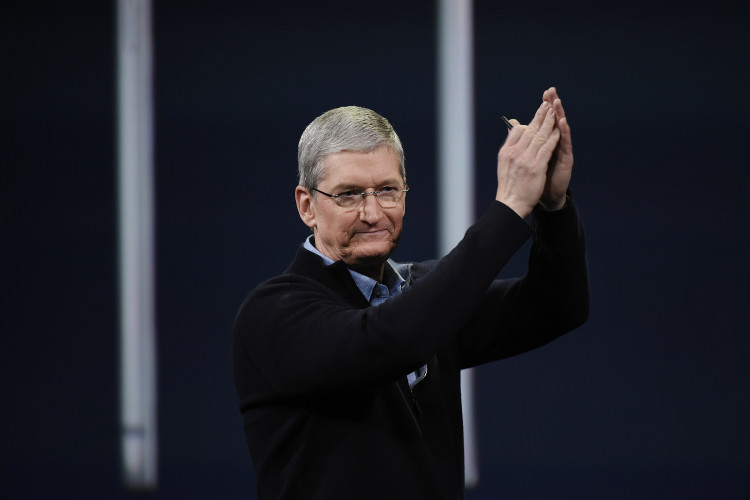Prediction: Apple Predictions Will Be Very Wrong Again: Gadfly

(Bloomberg Gadfly) —It’s the silly season for financial predictions about Apple Inc. With history as our guide, it is folly to place much faith in them.
Nearly every day brings deeply researched reports from stock analysts on their Apple sales forecasts. And this is not about the next quarter or two. The most pressing question analysts are trying to answer is how the next versions of the iPhone will sell and how smartphones that no one has seen yet will affect Apple’s financial results for its fiscal year ending in September 2018.
Yep. The most important numbers for the world’s biggest company are sales results 14 months in advance. Wall Street’s greatest minds are conducting surveys of smartphone buyers, checking with Asian factories that make iPhone parts and doing other financial research that is impressive but also infused with malarkey. The most recent task is assessing how Apple’s apparent plan to start selling a third iPhone model a few weeks later than its pattern for new phone debuts may shift revenue from fiscal 2017 to fiscal 2018.
We are truly through the looking glass of Apple forecasts. The trouble is if historical patterns hold, those predictions will be wildly inaccurate.
In Apple’s prior two fiscal years, the average of analysts’ estimates for revenue made 14 months earlier has been off by 20 percent and 12 percent from the actual figures Apple later posted, according to a Gadfly analysis of Bloomberg data. That means analysts were wrong by at least $30 billion each year, or roughly the annual revenue of Facebook or Time Warner.
Net income estimates 14 months before the end of Apple’s fiscal 2015 and 2016 also missed the company’s actual figures by large percentages. That is a whole lot of wrong.
I don’t mean to denigrate the work of people who are paid handsomely to predict Apple’s results. My point is this whole exercise of forecasting sales and other corporate financial metrics is inherently prone to error. And yet Apple’s stock price rises and falls based on these inherently error-prone analyst predictions of sales results many months from now. It would be helpful if analysts at least acknowledged the high degree of variability in their work.
Here is how the history of wrong predictions breaks down: In July 2014, the average of analysts’ revenue estimates called for Apple to generate $195 billion for its fiscal year ending in September 2015, Bloomberg data show. Those estimates were made months before Apple released the biggest blockbuster in its history, the iPhone 6.
Although there were already expectations Apple was about to release its first larger-screen iPhone model, analysts underestimated how big the iPhone 6 would be. Apple’s revenue in fiscal 2015 turned out to be $234 billion, or a difference of 20 percent from those forecasts 14 months earlier.
The next year the predictions were nearly as wrong the opposite way. In July 2015, analysts were expecting Apple to post $246 billion in sales for its year ending in September 2016. Actual revenue came in at $216 billion, or 12 percent short of the average prediction more than a year before.
Odds That Apple Financial Predictions Will Be Wrong: 100%
I’ll grant that those were two tough-to-predict years for Apple. Sales of the iPhone 6 models surpassed even optimistic predictions, and the hangover effect from the big-bang product launch most likely weighed down sales the next fiscal year.
If anything, though, Apple’s financial results for fiscal 2018 are even more of a wild card. The company is trying to break the mold with its iPhone product lineup, and no one really knows what will happen or what consumer demand will be in key markets such as China.
The Apple forecasting game is not too different from trying to predict the outcome of the U.S. presidential election more than 14 months ahead of November 2016. Of course a lot of people were wrong about that, too. Fourteen months before the election, the head of political data website Five Thirty Eight gave Donald Trump about a 5 percent chance of winning the Republican nomination. At that point Ben Carson and Carly Fiorina seemed like reasonably good bets.
For both Apple’s financial results and presidential elections, the outcomes were incredibly high stakes, and armies of consumer pollsters, big data analysts and smart pundits were on the case. It was still pseudo-science. The lesson is to take forecasts on elections or Apple seriously but not literally, because even the brightest minds produce imperfect predictions. Just ask Ben Carson.
This column does not necessarily reflect the opinion of Bloomberg LP and its owners
Shira Ovide is a Bloomberg Gadfly columnist covering technology. She previously was a reporter for the Wall Street Journal.







No Comment